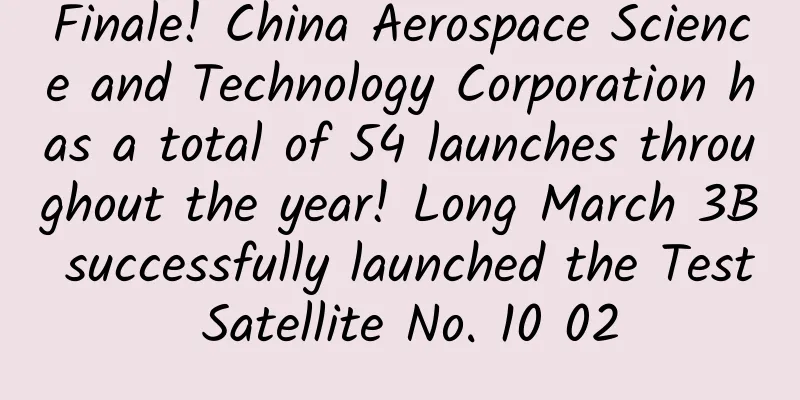Some are laying off employees, some are cutting prices, and some are waiting and watching. The elimination round of joint venture car manufacturers is both cruel and funny.

|
Do you remember the Fit that only had a radio and sold for 80,000 yuan? Do you remember the Honda CR-V that sold for 180,000 yuan but didn’t have a reversing camera? The joint ventures back then were really arrogant. They could beat domestic cars by just leaking some technology. The game of low configuration and high price was played by joint ventures year after year, and the key is that it was still quite profitable. But now, guess what they're doing? They're going downhill! It took less than five years for joint ventures to go from being at the top to being blocked everywhere. In other words, since the rise of domestic new energy vehicles, joint ventures have been on the decline. Recently, FAW-Volkswagen issued an internal notice, saying that it is in the last and only transformation window period, so it has slashed the prices of many of its main models, offering a replacement subsidy of up to 19,000 yuan, and then the Bora, Tanyue, Lanxun and other models have given discounts of about 50,000 yuan. The starting price of the Bora has Could you believe this before? At the same time, GAC Honda recently announced layoffs, with about 1,700 people agreeing to resign, accounting for 14% of the company's total employees. This is the first large-scale layoff of formal employees by GAC Honda in its 26 years of establishment. In early May, Nissan Motor CEO Makoto Uchida publicly stated that Nissan is committed to staying in China, but must change its strategy in China. In fact, the problem of joint ventures’ lack of localization has always existed, but it is still shocking to hear these words coming from the top management. The situation of other joint ventures is similar. In April 2024, the market share of Chinese domestic cars has exceeded 60%. That is to say, after excluding the unshakable Mercedes-Benz, BMW and Audi, and then removing the market share of Tesla, Toyota, Honda, Volkswagen, Nissan, Ford, Buick and other manufacturers together have a market share of only more than 30% in China. This is truly an unprecedented change. For the Chinese auto industry, this is a long-cherished goal, and now it is finally within reach; but for these joint ventures, this is their darkest moment, and even so, they still have to "roll" each other, and the elimination round has begun. There are dozens of joint ventures of all sizes in the Chinese auto market, but after years of fierce competition, the differentiation between joint ventures has become very obvious. In addition to the dying Korean and French brands, and the half-dead American brands, the remaining ones with relatively strong combat effectiveness are Volkswagen and Japanese brands. What’s interesting is that when faced with the crisis, Volkswagen and Japanese manufacturers took completely different paths. Volkswagen's strategy is very simple, using price cuts to maintain basic sales volume. In fact, the average price of Volkswagen, Toyota and other manufacturers is not high, and most users are ordinary consumers with a car purchase budget of less than 150,000 yuan, so using low prices to attract them is a good move. Frequent price cuts will of course damage the brand value, but Volkswagen has another move, which is to vigorously develop new energy vehicles. So far, Volkswagen South and North have launched a total of 6 ID. series pure electric models, with monthly sales exceeding 13,000 units in April 2024, surpassing many new car-making forces. Using gasoline cars to support electric cars, keeping up with the actual needs of Chinese consumers, and gradually completing the transformation to new energy, this is Volkswagen's basic strategy. In the field of fuel vehicles, Volkswagen seems to have lost interest in the battle. The Volkswagen Land Cruiser, which was launched in 2023, is Volkswagen's last newly developed pure fuel vehicle. Compared with Volkswagen, Japanese manufacturers seem too conservative. They are also reducing prices, but they still have some inexplicable confidence in their fuel vehicles and are still insisting on launching fuel vehicles such as the ninth-generation Camry. At the same time, Toyota and other manufacturers are constantly expanding the proportion of non-plug-in hybrid models, hoping to continue to tap the potential of fuel vehicles. In the field of new energy, Japanese manufacturers are even less impressive. So far, none of the three Japanese automakers have been able to enter the mainstream market with new energy models. The Toyota bZ3, which has the highest sales, has an average monthly sales of more than 3,000 units, but this car is actually supported by BYD's blade batteries and motors. Interestingly, until now, Toyota executives are still used to popularizing the non-necessity of electric vehicles and pointing out the various shortcomings of electric vehicles from time to time. This is also one of the famous scenes of Japanese manufacturers. Wang Chuanfu once said that in three years, domestic manufacturers will occupy about 90% of the market share. Judging from the current development trend, this prediction is likely to be realized ahead of schedule. By then, American, French and Korean brands may have disappeared, and the competition between Volkswagen and Japanese brands will also be decided. The problem with Toyota and other Japanese manufacturers is that they were too stubborn, or did not pay enough attention to the Chinese market, and missed the window of new energy, and now it is difficult to catch up. Although the sales of Volkswagen's pure electric models are not as expected, at least it has a relatively complete product layout. As long as it insists on R&D investment, it may not be impossible to compete with domestic cars. The elimination round between joint ventures has begun. This nearly 40-year feast of foreign investment will eventually end, and domestic manufacturers will completely dominate the market. So, who do you think will survive in the end among so many joint ventures? As a winner of Toutiao's Qingyun Plan and Baijiahao's Bai+ Plan, the 2019 Baidu Digital Author of the Year, the Baijiahao's Most Popular Author in the Technology Field, the 2019 Sogou Technology and Culture Author, and the 2021 Baijiahao Quarterly Influential Creator, he has won many awards, including the 2013 Sohu Best Industry Media Person, the 2015 China New Media Entrepreneurship Competition Beijing Third Place, the 2015 Guangmang Experience Award, the 2015 China New Media Entrepreneurship Competition Finals Third Place, and the 2018 Baidu Dynamic Annual Powerful Celebrity. |
<<: Moutai is angry about the drastic price cuts on e-commerce platforms during Double 11
>>: Gionee Marathon M3 released: equipped with 5000mAh battery
Recommend
Drawing like humans, GT team develops graffiti robot system
Recently, a research team from Georgia Institute ...
How to create and attract traffic for “TikTok Startup Account” short videos?
This issue shares an article about how to attract...
Bamboo flowering means bad feng shui? Stop believing in superstition!
It, facing the pond, is like jade, and would rath...
Who is eating up the world?
Marc Andreessen once famously said, "Softwar...
Is your understanding of the “mixed” COVID-19 vaccine correct?
Xinhua News Agency, Beijing, February 21 (Reporte...
How to select images for information flow ads? Are there any tips?
As the title says, today we are going to introduc...
Overweight, the National Health Commission takes action! Have you fallen into these weight loss "pitfalls"?
On March 9, the 3rd Session of the 14th National ...
Why do many apps always need to be upgraded? What are they trying to do?
When we use our phones, we will inevitably encoun...
APP promotion and operation: How did the first batch of users come?
When developing an APP, we must first understand ...
Can you really avoid nutritional deficiencies by taking supplements alone?
The pace of life of modern people is indeed getti...
10 tips to help you write a hit video title
With the advent of the video era, in order to cre...
The myriad of things inside the nucleus: mysterious and fascinating nuclear isomers
It has been more than 100 years since nuclear iso...
Tesla recalls 53,000 vehicles to replace electronic parking brakes
Tesla recently announced that it will recall 53,0...
Can the 1799 yuan price tell the truth? Meizu MX4 full review
In September this year, the mobile phone industry...
"Space Express", set off! China's space station construction phase begins
In the early morning of the 10th, my country succ...









